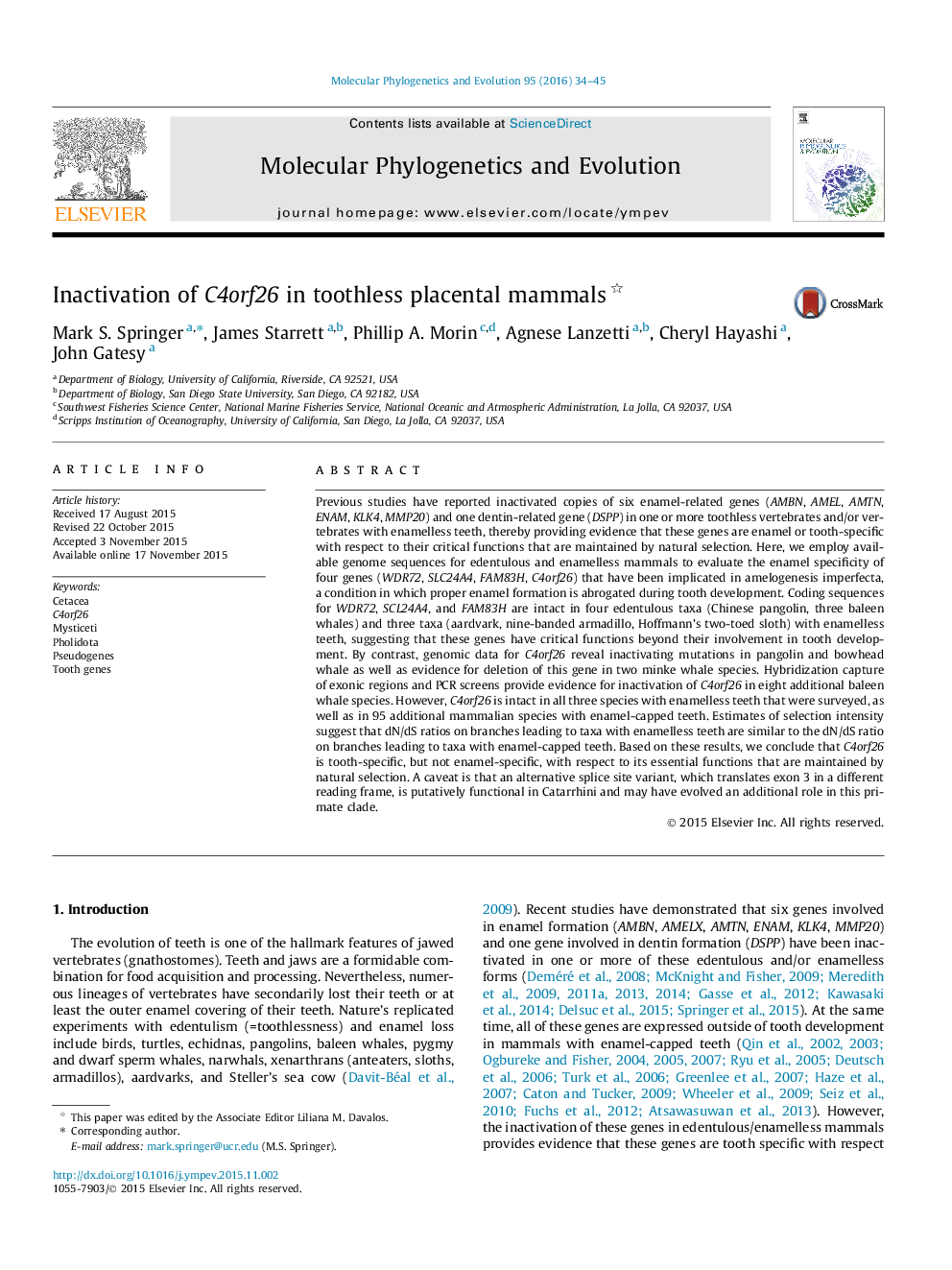| کد مقاله | کد نشریه | سال انتشار | مقاله انگلیسی | نسخه تمام متن |
|---|---|---|---|---|
| 2833719 | 1570802 | 2016 | 12 صفحه PDF | دانلود رایگان |

• C4orf26 is a pseudogene in toothless mammals (pangolins and baleen whales) based on the presence of inactivating mutations.
• C4orf26 remains functional in mammals with enamelless teeth (aardvark, sloth, armadillo).
• C4orf26 is tooth specific, but not enamel specific.
Previous studies have reported inactivated copies of six enamel-related genes (AMBN, AMEL, AMTN, ENAM, KLK4, MMP20) and one dentin-related gene (DSPP) in one or more toothless vertebrates and/or vertebrates with enamelless teeth, thereby providing evidence that these genes are enamel or tooth-specific with respect to their critical functions that are maintained by natural selection. Here, we employ available genome sequences for edentulous and enamelless mammals to evaluate the enamel specificity of four genes (WDR72, SLC24A4, FAM83H, C4orf26) that have been implicated in amelogenesis imperfecta, a condition in which proper enamel formation is abrogated during tooth development. Coding sequences for WDR72, SCL24A4, and FAM83H are intact in four edentulous taxa (Chinese pangolin, three baleen whales) and three taxa (aardvark, nine-banded armadillo, Hoffmann’s two-toed sloth) with enamelless teeth, suggesting that these genes have critical functions beyond their involvement in tooth development. By contrast, genomic data for C4orf26 reveal inactivating mutations in pangolin and bowhead whale as well as evidence for deletion of this gene in two minke whale species. Hybridization capture of exonic regions and PCR screens provide evidence for inactivation of C4orf26 in eight additional baleen whale species. However, C4orf26 is intact in all three species with enamelless teeth that were surveyed, as well as in 95 additional mammalian species with enamel-capped teeth. Estimates of selection intensity suggest that dN/dS ratios on branches leading to taxa with enamelless teeth are similar to the dN/dS ratio on branches leading to taxa with enamel-capped teeth. Based on these results, we conclude that C4orf26 is tooth-specific, but not enamel-specific, with respect to its essential functions that are maintained by natural selection. A caveat is that an alternative splice site variant, which translates exon 3 in a different reading frame, is putatively functional in Catarrhini and may have evolved an additional role in this primate clade.
Figure optionsDownload as PowerPoint slide
Journal: Molecular Phylogenetics and Evolution - Volume 95, February 2016, Pages 34–45